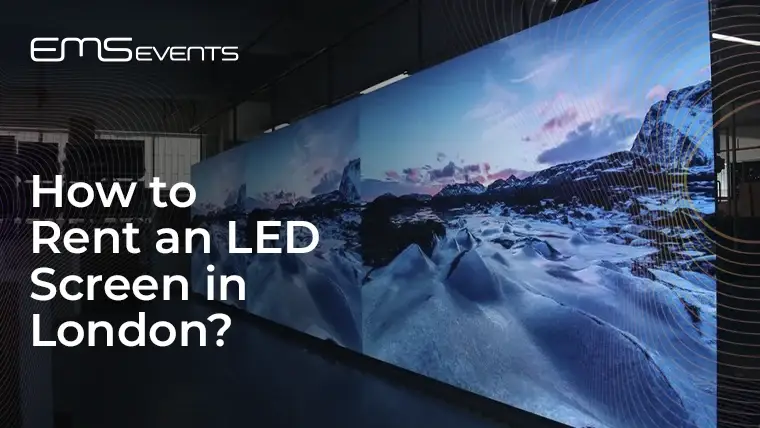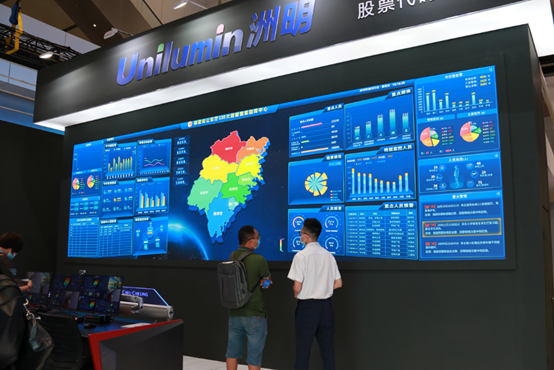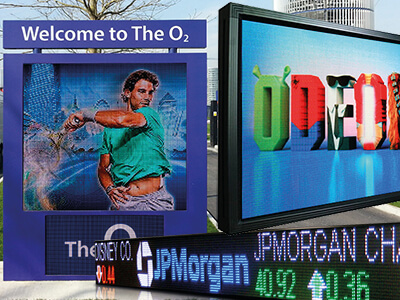Excellent Reasons On Selecting Led Rental Screen
Wiki Article
How Important Is The Resolution And Pixel Pitch In The Process Of Investigating Led Displays?
When looking into LED displays, pixel pitch and resolution are two important aspects to be considered. Both of these factors directly affect the clarity and details of the display as well as the overall visual experience. They are important due to these reasons:
1. Image Quality
Pixel Pitch: Pixel pitch is the distance between the LED center and its neighboring pixel. A lower pixel pitch signifies that the LEDs are further together, resulting in a more dense pixel and a higher resolution. This results in sharper, more detailed images, particularly important for images with fine details or text.
Resolution: The number of pixels shown on the screen. It is typically expressed in terms of width and height (e.g. 2048x1080). Higher resolutions allow the display to show more detail and creates a more immersive experience. This is particularly true for large screens where the viewers are near to the screen.
2. Distance to view
The pixel pitch of a display has a significant impact on the viewing distance. For displays that are seen from a distance like indoor screens, or those used for exhibitions or retail, a smaller pixel pitch (and thus higher resolution) is essential to prevent pixelated images. A larger pixel size may suffice for large outdoor display or billboards which will be seen from a distance.
3. Content Versatility
Displays with a lower pixel pitch and higher resolution are able to handle a greater variety of content types such as high-definition movies to intricate graphics as well as small text. This flexibility can be vital for various applications, including broadcast studios, digital signage and control rooms.
4. Cost consequences
Although a lower resolution provides better image quality but it also increases the price of the screen. Making screens with a higher resolution is more expensive because of the number of LEDs utilized. Budgets should be balanced with the requirement for high resolution.
5. Application Specificity
The importance of resolution and pixel pitch can vary depending on the specific application:
Indoor Displays: Most often, require smaller pixels (e.g., 1.2mm to 2.5mm) to provide high resolution at close viewing distances.
Outdoor displays may have higher pixels pitches (e.g. from 4mm to up to 10mm) because they can be seen from a greater distance and therefore, high resolution is not as important.
6. The product's longevity and its ability to be upgraded
With the advancement of technology in display and technology improves, the pixel pitch has decreased and allowing larger resolutions in smaller spaces. Investing in a display with an optimal pixel pitch today can guarantee that it will remain functional and relevant for a longer period, reducing the need for frequent updates.
Conclusion:
Display resolution and pixel pitch are crucial factors in determining the performance of an LCD display. This is particularly important when it comes to quality of viewing and the flexibility of content. When researching LED displays, take note of these elements depending on the specific use as well as your intended audience and budget to ensure you select a display that meets your requirements effectively. Take a look at the top rated creative led displays for site examples including display led outdoor, outdoor led monitor, church video wall, transparent screen, flexible led display screen, display screens, transparent led panel, outdoor led screen, outdoor digital display, led outdoor display screen and more.

What Is The Most Important Thing To Remember When It Comes To Led Displays?
What's the importance of Refresh rate when researching LED displays? What is the reason why the refresh rate is crucial?
1. Image Smoothness and Clarity
Definition: The refresh rate is the frequency per second (measured in Hertz or Hz) that the display refreshes its image. A higher refresh rate is more smooth and reduces flickering.
Important: For screens that show video content animations, fast-moving images or animated graphics, a higher rate of refresh (such as 3,840Hz or more) will ensure that the movement is smooth and doesn't stutter. This is important for digital signage, sports arenas and concerts, where a smooth visual experience can enhance the viewer's experience.
2. Flicker free performance
Flicker. Displays having low refresh rates can cause noticeable flickering. Especially when viewed via an video camera or slow-motion video. Flickering images can cause eye strain or fatigue, which makes it uncomfortable to view the screen for long periods of time.
Application: In settings where the display is filmed or photographed, such as in broadcasting studios or at events A high refresh rate minimizes flicker and ensures the image is recorded clear and with no visual artifacts.
3. Visual Quality in Various Lighting Situations
Impact on Brightness The impact on brightness can affect the performance of a display under different lighting conditions. For example in bright areas, a fast refresh rate will help to maintain the quality of images. This will also help to prevent visible flickering which can cause damage to the display.
Use: This could be useful in outdoor displays or stage events in which the lighting is frequently changed.
4. Content Compatibility
Synchronization is important The refresh rates should match the source of content, be it an audio playback system, a camera, or a live broadcast. If the refresh rate of the display is not in line with the frame rate of the content it can result in blurred or unmatched frames that negatively impact the user experience.
Application: In professional settings like large-scale events or TV studios where the content is supplied from multiple sources, making sure that the frame rate of refresh is consistent with the frame rate of the content is vital for seamless playback.
5. Enhance Your Viewing Experience
Motion Handling High refresh rates decrease blur, while also providing more detailed, clearer image. This is beneficial in applications such as gaming, sports broadcasting or other settings which show fast-moving action.
Event Venues that host gaming, sports, or other events that are high-energy will benefit from high rate of refresh. This will ensure that the crowd can see each detail with clarity.
6. Reduction of eye strain
Comfort: A slow refresh rate may cause eye strain while viewing for extended durations, particularly when people are close to the screen or when content is viewed over a prolonged period.
Application: In retail settings or offices, as well as public spaces where people may be viewing the display for extended time periods, a higher refresh rate can lead to an enjoyable and comfortable experience.
7. Renting and Staging Applications Performance
Adaptability for rental and staging LED displays that are utilized in various settings and for various types of content having a high refresh rate means that the display is able to accommodate the needs of any event, whether it's live performances corporate presentations, live performances, or multimedia showcases.
Application: In the context of an array of kinds of content and audience high-speed refreshment is essential for adaptability and dependability.
Conclusion:
The refresh rate is a crucial aspect that directly impacts the quality of vision as well as the comfort and flexibility of LED display. This is particularly important in applications that have active content, live events, and for environments where the display will be used for an extended period of time. If you're researching LED displays, you must focus on a high-refresh rate to ensure a display with no flicker that enhances the viewing experience for the user and meets the specific needs of your customers. Follow the best led rental screen for site tips including display device, led wall panels, wall tv, led in the wall, video walls, led in the wall, led panel rental, transparent led screen, led in the wall, outdoor led screen and more.

What Is The Importance Of Color Accuracy And Calibrating When It Comes To Led Displays?
Color accuracy and calibration are crucial when looking into LED displays, especially for applications in which visual quality as well as brand integrity are essential. Why are these factors important?
1. Realism and Visual Quality
Color Accuracy: How accurately can LED displays reproduce the colors designed by creators of content? High precision in color ensures that photos and videos look real and vibrant, and appear as they should.
Importance: In applications like advertising and broadcasting, retail and professional presentations, accurate colour reproduction is vital for maintaining visual appeal and effectively conveying the message.
2. Brand Integrity
Consistency of Branding Consistency of branding is essential for companies that rely on certain color schemes to portray their brand. If the colors aren't accurate they could damage the branding identity of the company.
Application: Brand colors should be accurately maintained in all display areas in retail stores and corporate offices.
3. Engagement of the audience and its impact
Improved Viewer Experience High-quality color accuracy will create a more immersive, engaging and immersive experience for the viewers. Accurate colors can help communicate emotions and messages more effectively, enhancing the overall impact of the display.
Application: In venues such as theaters, museums or any other place where the intention is to evoke emotional responses the accuracy of color can guarantee that the viewers get the best experience.
4. Content Creator Intent
The work of artists, designers and content creators are often based on specific color palettes. Displays that accurately replicate these colors will ensure the work of artists, designers and content creators is shown exactly as they intended.
Application: Color accuracy is vital in the field of film, digital photography, and art, where color plays an significant roles in visual story and aesthetic appeal.
5. Calibration for Consistency
Unevenness across Panels: The calibration assures that LED panels within a display have consistent brightness and colors, preventing any mismatches. This is vital for large-scale displays with multiple panels.
Even the most sophisticated displays can be unable to maintain color accuracy as they age. For the best performance, it's essential to perform regular calibrations to ensure consistency.
Application: When installing large video walls, video walls outdoors, or multi-panel systems, the need to calibrate is vital for an even and smooth appearance. This is particularly important for professional installations with a high profile.
6. Effect on Content Types
Different types of content Different types of content need different levels of accuracy in color. Medical imaging displays for instance require a high degree of accuracy to perform proper diagnostics. An advertising display, on the other hand, may prioritize vibrantness and saturation.
Application: In special fields such as medical design, image, and high-end retail the capability to finely alter the color settings will ensure that the display is meeting the exact specifications of the content that it shows.
7. Technology and Specifications
Bit Depth and Gamut : Displays with high bit depth and big color gamuts (such as DCI P3 or Rec. 2020 provides better color accuracy. It can also reproduce the full range of colors. Knowing these specifications is crucial when selecting a screen for applications that require precision in color.
Advanced Calibration Tool Today's LED displays typically come with sophisticated software and calibration tools that allow precise adjustments. This means that the display remains accurate throughout its lifetime.
Applications: In fields that require color fidelity, such as graphic design, film production and marketing that is high-end, it is important to purchase displays that have high-end color precision.
Conclusion:
It is crucial to make sure that the LED display is calibrated and feature exact color reproduction to create high-quality images that reflect the creator's intent and conform to brand standards. A precise color reproduction is essential for any display, whether used for entertainment, advertising, presentations for professionals, or for specialized fields such as medical imaging. When you are researching the options for LED displays, give priority to color accuracy and calibrating, especially when the software you're using needs accurate color representation and consistent performance. Take a look at the most popular flexible advertising boards for website tips including church video wall, led in the wall, led board rental, led display screen, led rental screen, led display transparent, church led wall, video walls, display screens, transparent led display screen and more.
